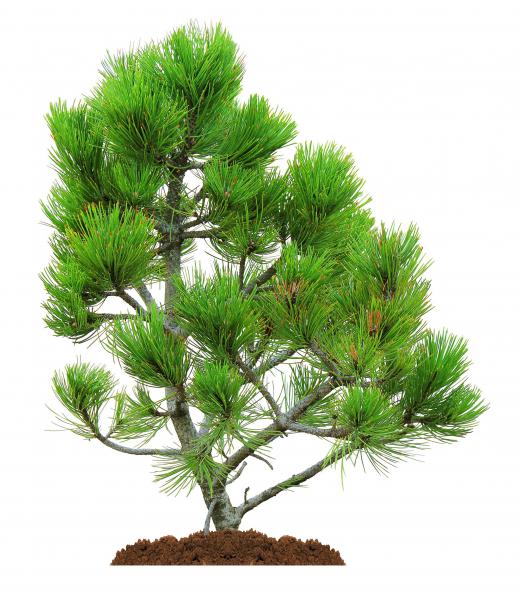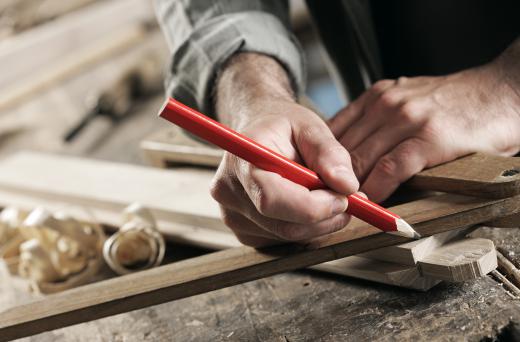Pine lumber is pine that has been cut into boards and so-called dimensional lumber. The boards are most commonly used for flooring, shelving, and furniture. The dimensional lumber — cuts from eight feet (2.44 m) to 12 feet (3.66 m) and longer, are characterized by their relatively short width and depth dimensions, the most common of which are two inches (5.08 cm) by four inches (10.16 cm), usually called a two-by-four, or 2x4. Dimensional lumber is used extensively in the framing of houses and other structures, as well as for the interior walls of larger buildings, although aluminum framing materials are gaining in popularity. Dimensional pine lumber is also popular for building decks on the outside of houses.
About 115 different species make up the general group of trees called pine. These are coniferous trees — that is, their seeds are stored in cones before being distributed. In addition, their leaves are very thin, often shaped like needles, and don't fall off the tree in the autumn. Trees that aren't pine — that is, trees with broad leaves that usually lose their color and fall off the tree in the fall — are called deciduous. The wood of most pine trees is easier to cut and less dense than that of most deciduous trees, leading to coniferous trees being labeled softwoods and deciduous trees are called hardwoods.

In addition to being relatively softer, and thus easier to cut and to mill, pine trees generally grow faster and are more plentiful in the world's forests, making them a more renewable resource than most deciduous trees. This makes pine lumber highly popular for construction applications because it's less costly than hardwood lumber.
Pine lumber is used primarily for framing residential construction and small commercial structures. Dimensional lumber is used for this purpose, with 2x4s being used for the studs that support walls, and wider pieces, such as 2x10s (5.08 cm x 50.8 cm) and 2x12s (5.08 cm x 60.96 cm) used as joists and beams to support floors and roofs. There are many additional carpentry uses for pine lumber, such as moldings, door and window frames, paneling, and roofing.

Pine lumber is especially versatile. Southern yellow pine, for example, has a beautiful color and grain, and is used widely in North America for flooring. Red cedar, with a natural resistance to rot and insects, is used to make outdoor furniture such as Adirondack chairs; left untreated, it develops a silvery gray color after a relatively short time outdoors. Red cedar is also popular as decking, as is redwood, although some tropical hardwoods are sometimes used for the decking itself, along with pressure-treated pine lumber like Douglas fir, spruce, or white pine lumber being used for the frame and supporting structure. Knotty pine, which isn't a species, but a condition common to most varieties, is often prized for its beauty in furniture.
